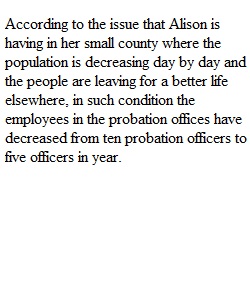


Q MPA 5140 Module Two Case Study Assignment Organizational Creativity and Innovation in the Public and Nonprofit Sectors Directions Read the below case study and consider the questions posed. In a detailed and substantive paper, offer answers to the questions and your overall assessment and analysis of the case no later than Sunday 11:59PM of the module. If possible, relate your response to your experience in the public and nonprofit sector—at your current job or a previous one. The Case The following three realities confront managers and leaders in the public and nonprofit sectors in the post-9/11 era, all of which demand and necessitate organizational creativity and innovation: 1) Due to years (or decades) of consistent and often drastic budgetary cuts and reductions, the “new normal” is “doing more with less” 2) Despite smaller budgets, agencies are expected to deliver the same number or level of services (or more), just as effectively and efficiently, often with fewer staff 3) Due to decreased levels of staffing, agencies as a whole are “flatter,” so midand even low-level professionals and administrators are thrust into management and leadership roles and positions, oftentimes with little experience or training Alison is the Chief Probation Officer for a mid-sized county in the Midwest. Like many rustbelt communities, her county has seen drastic increases in the overall crime rate, especially the number of arrests and convictions for heroin-related crimes, over the past 10 years. Additionally, the county suffers from a declining population; vanishing tax base as industries and employers leave the area; and declining wages; in addition to a host of other socio-economic related problems. Despite serving as the head of her organization, Alison has been a probation officer for just over six years, being promoted roughly every two years as her organization suffers from a high turnover and burnout rate. She is smart, capable, invested in her organization and community, and well educated; having earned an MPA online from a reputable, large university in the Midwest. When Alison was first hired, there were 10 probation officers in her agency, plus three administrative support staff. Now, due to budgetary cuts in her organization and throughout the county, there are 5 probation officers and 1.5 support staff; yet caseloads have increased by 50%. Alison knows that the caseload will only increase and she cannot expect an increase in her staff. Furthermore, the judges in her county are progressive and are sentencing more offenders to probation rather than jail (which is a positive development). There are support programs and resources in place to assist offenders and reduce recidivism that have been effective. Alison needs help. 1) To whom should Alison look for assistance, support, guidance, expertise, and information, both with regard to probation-related solutions and questions and management/leadership-related solutions and questions? 2) How can Alison reduce turnover and burnout amongst her staff at relatively low cost? 3) How may Alison work with the judges and her superiors in county government to better deliver services? 4) How can Alison empower and involve her staff, community members, vested stakeholders, and even “clients” in creatively addressing some of her problems? 5) Where might Alison seek and obtain funding and resources outside of the established county funding model?
View Related Questions